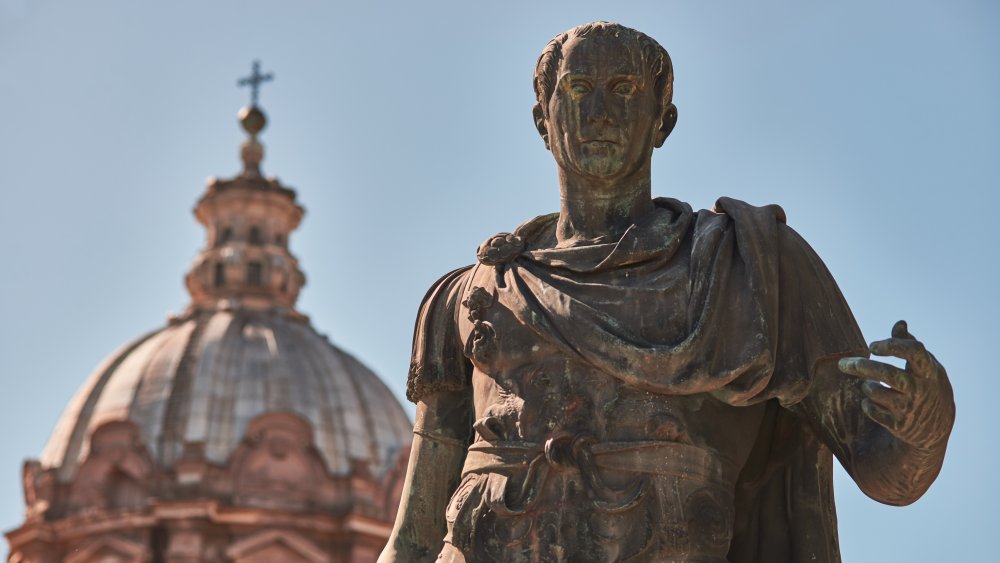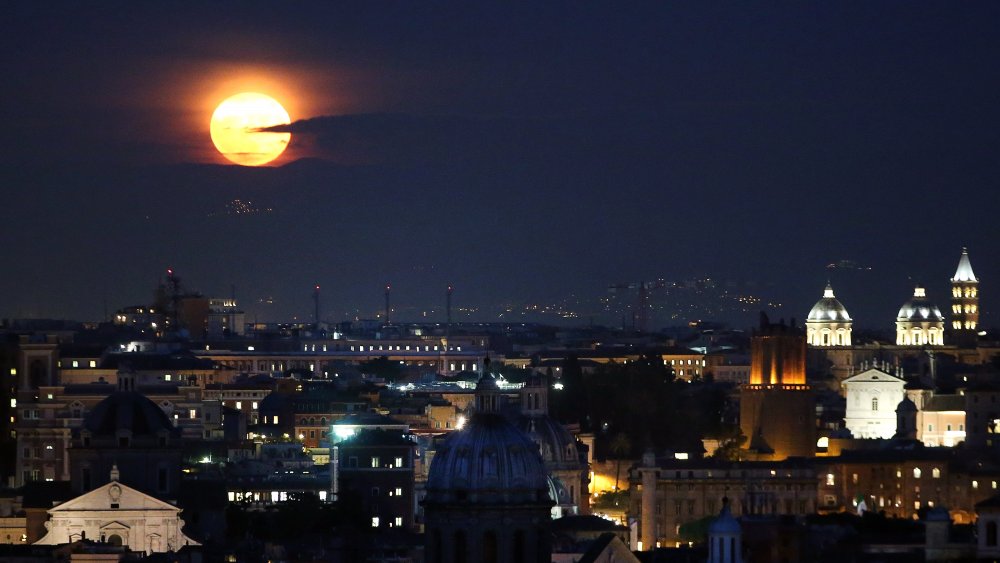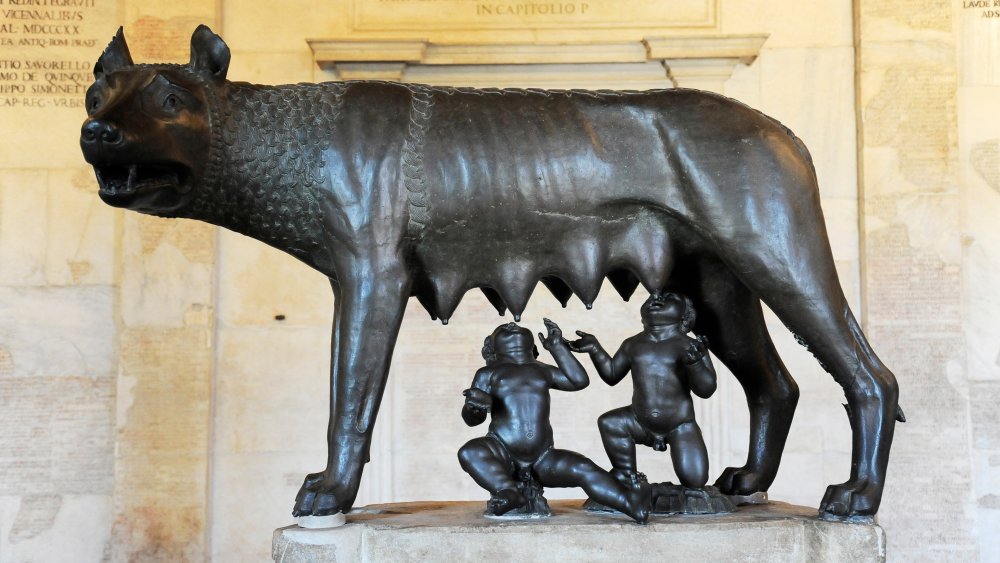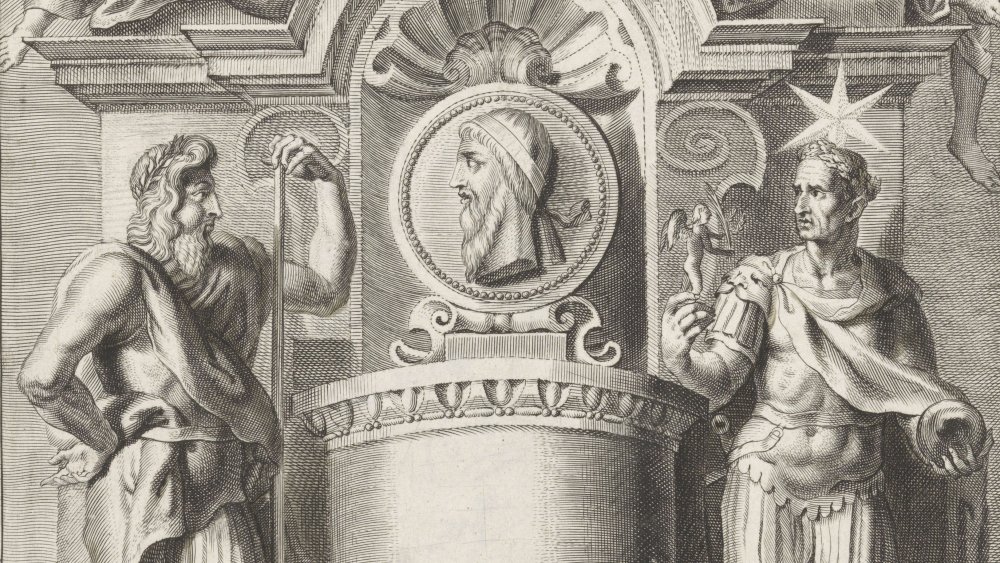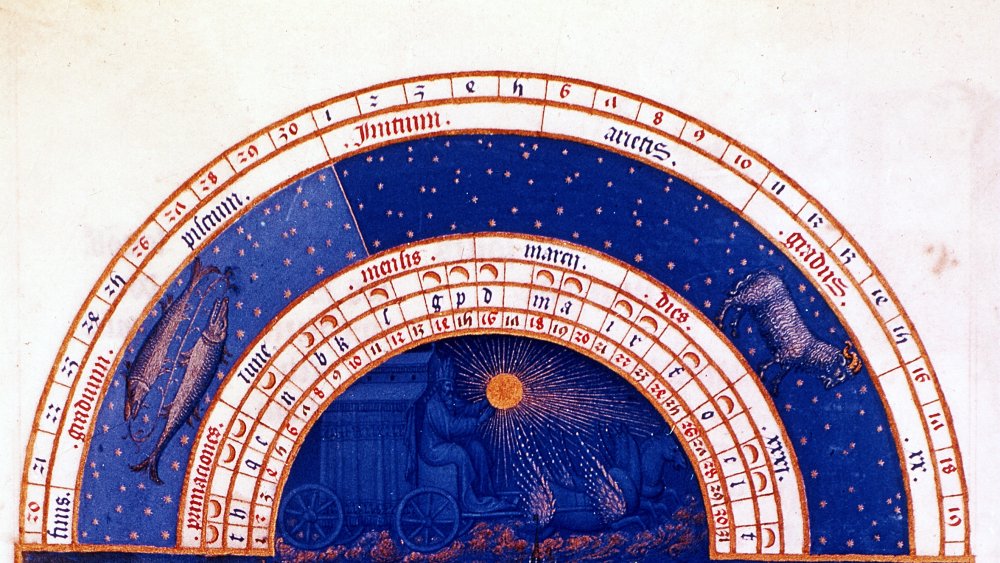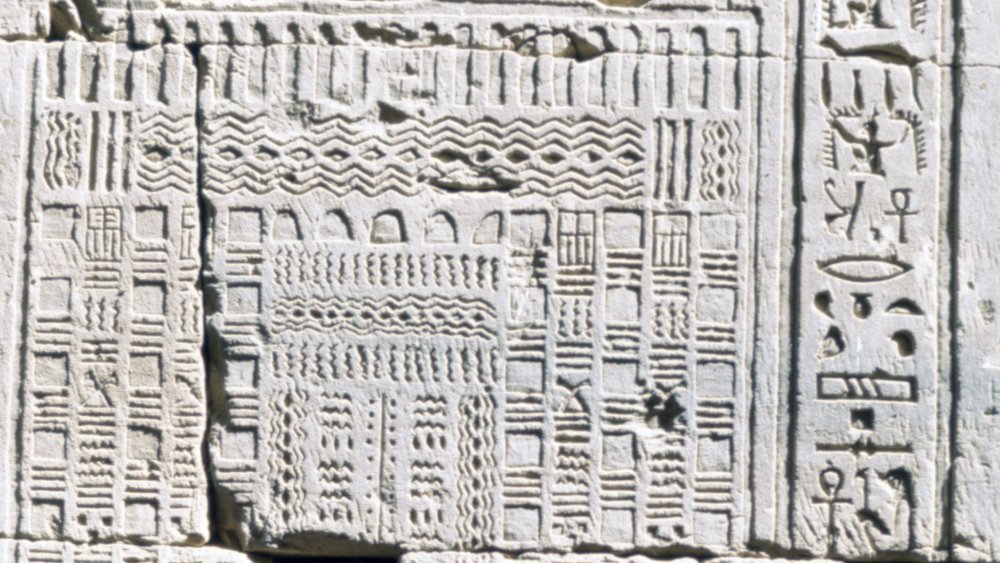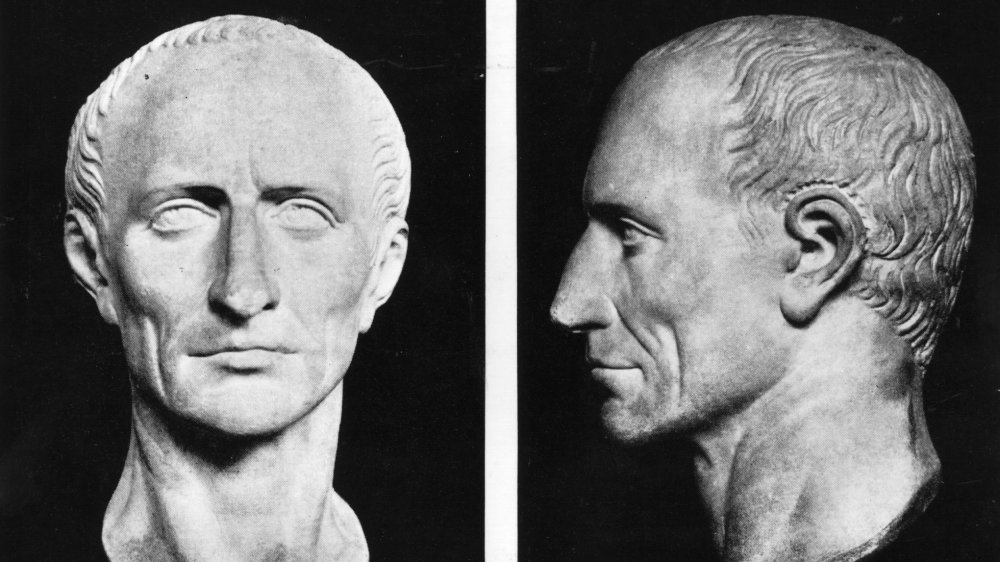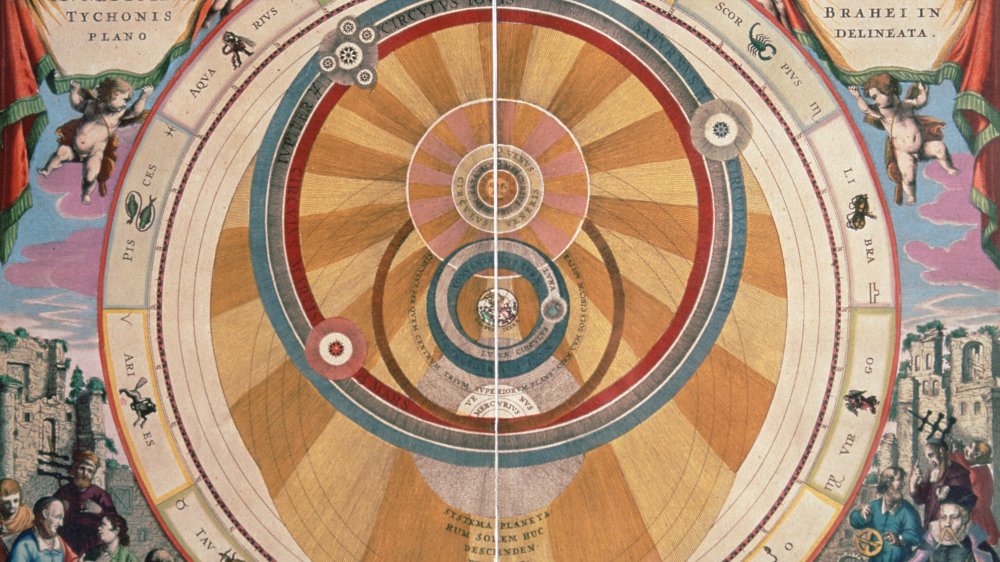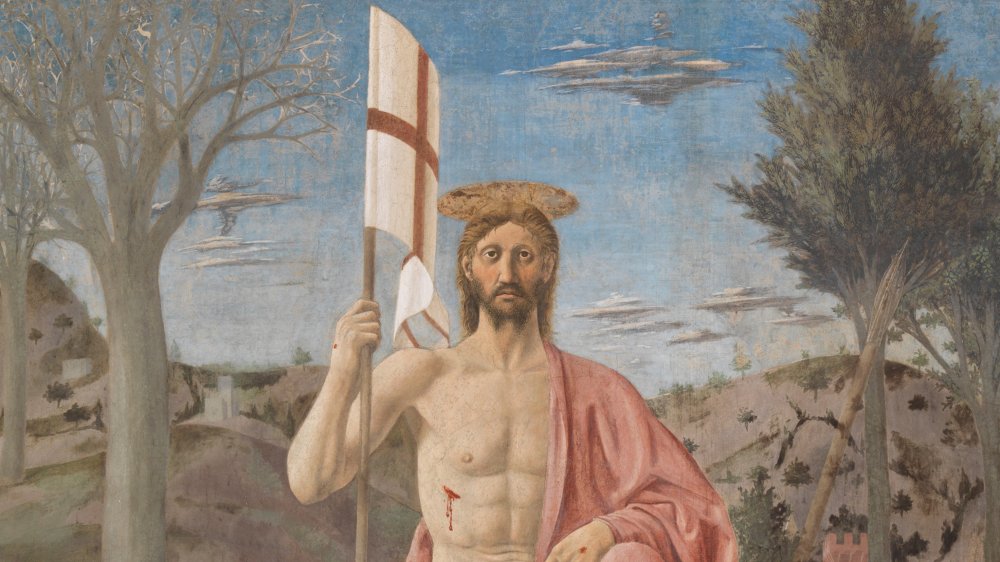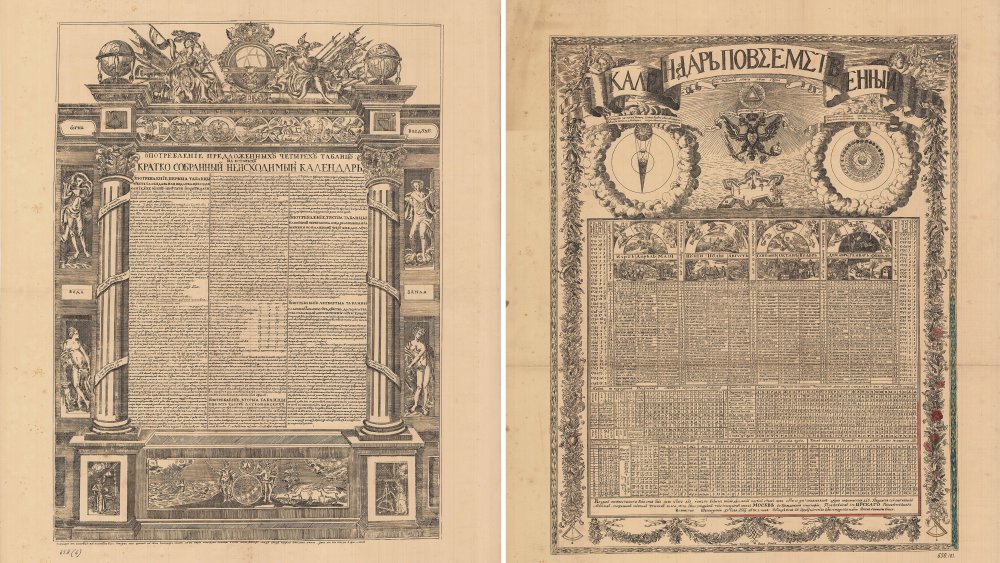Why 46 BC Was The Longest Year Ever
While the Gregorian calendar has taken over the world for most people's calendrical needs, keeping track of time didn't come naturally. The Gregorian calendar evolved out of the Julian calendar, while the Julian calendar evolved out of the Egyptian calendar, but these evolutions weren't always the smoothest transitions.
There are multiple ways to track the passage of time and different cultures often used either lunar schemes, solar schemes, or a combination of the two. However, sometimes these calendars required intercalation of extra days or weeks into the year in order to keep the calendar up to date with the solar year. However, since these intercalations were added in manually, they were often subject to abuse by those who maintained the calendar. Basically, it was a horological disaster.
Ancient Rome's road to the Julian calendar was especially rocky due to these intercalations, and the effort to reform the calendar ended up resulting in the longest year in human history. This is why 46 B.C. was the longest year ever.
Lunar vs. solar
Throughout history, people have typically chosen one of three types of calendars to keep track of the passage of time: lunar, solar, or a combination of the two. Lunar calendars base themselves off the movement of the moon and its phases around the Earth, with a new moon occurring every 29.5 days. In comparison, solar calendars mark time through the seasons and set the calendar according to the equinoxes and solstices. According to Big Think, the lunar calendar typically ends up being only 354 days, and since the months are designated by the phases of the moon, the months also don't have a standardized length and may vary sometimes by as much as an entire day. The remaining 11 days (compared to the expected 365) were referred to as an "epact" and due to the 11 day difference, an extra month was inserted into the calendar every three years in order to realign the lunar calendar with the solar scheme.
Originally, the Roman calendar was based on a lunar calendar. According to LiveScience, the year was "10 moons long," with the first of each month occurring on new moons. The first day of each month was referred to as the "kalends," which is also where the English language derived the word calendar.
Founding of Romulus
After the founding of Rome, which legend says occurred around 753 B.C., the lunar calendar used by the Ancient Romans was said to have been created by Romulus himself, the founder and first King of Rome. Although, according to WebExhibits, the Romans may have also borrowed some of their calendar from the Greeks. This is fairly likely, considering that the Romans were greatly influenced by the Ancient Greeks. Since the Roman calendar was only 10 months long, the calendar year only lasted 304 days. The seasons were also elongated and spring, summer, and fall were all considerably longer than their moon cycles. As a result, there were also roughly 60 unaccounted-for days in winter that simply weren't part of any month.
According to Time and Date, Martius, also known as March, was the first month of the year and the calendar started every year on the first day of spring, roughly around the Ides of March (March 15th). The beginning of the year was treated as a sign to farmers that they should begin sowing wheat and pruning trees, since it was also during this time that there'd begin to be equal parts night and day.
Reforms of Numa
Around 713 B.C., the Roman King Numa Pompilius made some reforms to the Roman calendar. Seeing that the 10-month calendar system was unstable and irregular, Numa resolved to improve upon the calendar when he succeeded Romulus. Numa added two months, January and February, to the year and increased the number of months from 10 to 12. However, the months were still lunar in nature and alternated between 29 and 30 days.
While Numa is credited with adding January and February to the year, Roman writers disagree over who decided that January would be the first month. A commission called the Decemviri is sometimes credited with making January the first month in 450 B.C., but it's likely that Numa was the original author since he chose the name "Januarius." The name was chosen for Janus, the god of endings and beginnings, making it the most appropriate choice to open and close out the year.
According to LiveScience, Numa's calendar year still came up short, adding up to only 355 days. Advised by his astronomers, Numa added a thirteenth month that was only to be counted every two years, calling it "Mercedonius." According to the Journal of Calendar Reform, since this extra month was to be manually inserted, Numa assigned the supervision of these intercalations to the Pontifex Maximus, head of the College of Pontiffs. Unfortunately, this led to abuses by political officials who shortened or lengthened the calendar depending on whether they wanted to keep friends in power or remove enemies from it.
Years of chaos and confusion
With calendrical control in the hands of high-ranking state priests, the Roman calendar devolved into a time known as the "years of confusion" leading up to Julius Caesar's reform. Since the term of office for a Roman magistrate was tied to the calendar year, priests would purposefully keep a year short if an opponent was in power, or lengthen the year in order to keep an ally in power. This was made easier since intercalations were often announced soon after they were decided, so the average citizen rarely knew the exact date, especially if they lived far from the capital.
According to the Journal of Calendar Reform, over the years the calendar was abused so much that in the 1st century B.C. the spring equinox was roughly three months off. There were also various other manipulations of the calendar that caused it to shift off track. In 300 B.C. Gaius Flavius Fimbria instigated a reform that made every month have either 31 or 29 days, except for February, while still observing the intercalary month Mercedonius. But Flavius' change wasn't meticulously followed and as a result, historians find it difficult to determine the correct dates of events from those years. Had Flavius' change been correctly observed, the calendar would've been roughly 250 days out of sync with the solar calendar.
The Egyptian influence
The Ancient Egyptians had been following a solar calendar since roughly 3000 B.C. Dividing the year into 12 months with 30 days each, they would add another five days every year to bring the total number of days up to 365. Caesar spent 48-46 B.C. in Egypt, during which time he was greatly impressed by the Egyptian calendrical system that had the ability to correspond with the seasons. According to Plutarch, Caesar took the advice of Cleopatra's court astronomer and decided to reform the Roman Empire's calendar based on the Egyptian system.
When Caesar returned to Rome, he enlisted the help of Sosigenes of Alexandria as well as council of mathematicians and philosophers to help develop a refined Roman version of the Egyptian calendar. Caesar wanted to create a calendar that didn't require manual manipulation, for even the Egyptian calendar required an insertion of five days every year. According to the Journal of Calendar Reform, Caesar decided to distribute the five days from the Egyptian calendar evenly throughout, bringing the number of days in a year to a static constant.
Mixing the methodology of the Egyptian calendar with the extant Roman calendar, Caesar added 10 days to the Roman lunar calendar (355 days), making it a solar calendar (365 days). Caesar spread the additional days throughout the year, though February was left unaltered in order not to disturb religious rites.
The last year of confusion
Unfortunately, with all of the manipulations and abuses that had occurred over the previous years, Caesar's reforms couldn't simply be started immediately since the calendar was roughly 90 days behind. To remedy this, Caesar added Mercedonius along with two extra months, Undecember (33 days) and Duodecember (34 days), into the year in order to correlate the calendar with the seasons. According to the University of Houston, while the year had started out normally for Roman citizens, all of a sudden they were told that this year would be three months longer than usual. By adding the three extra months, festivals and seasons were able to be realigned with the calendar and January 1st was set as the official new year beginning.
As a result, the year became 445 days long, making it officially the longest year on record. According to Ohio State University, while Caesar called it "ultimus annus confusionis," or "the final year of confusion." Romans joked that it was just another annus confusionis, or year of confusion.
It was also during this time that Quintilis was renamed Iulius (July) to commemorate Caesar's birth month. While it would take until 8 B.C. for Sextilis to be renamed Augustus, at this point Caesar's calendar started to closely resemble our contemporary calendars.
Invention of leap day
While the Julian calendar was significantly more accurate than its predecessors, it still wasn't quite right. Since a solar year is closer to 365.25 days, Sosigenes of Alexandria told Caesar that they'd need a remedy in order to account for the missing quarter. They decided to incorporate Ptolemy III Euergetes' suggestion of an extra leap-year day in February every four years, though it would be an automatic addition in order to avoid further abuses.
According to the Journal of Calendar Reform, the addition of a leap-year day was initially misinterpreted. The College of Pontiffs thought that a leap year should be observed every three years rather than every four, and as a result the calendar shifted once more. As a result, when Augustus took charge, he cancelled leap years between 8 B.C. and 8 A.D. in order to realign the Roman calendar once more with the solar calendar. After 8 A.D., leap years resumed under Caesar's original instructions.
11 minutes off
Despite all his careful planning, Caesar's calendar ended up being off by roughly 11 minutes compared to the solar year. According to the Los Angeles Times, since there are 365.2422 days in each year, Caesar's correction of 365.25 (with the quarter days added as one extra day every four years), resulted in a difference of 11 minutes and 14 seconds. While at first glance the difference doesn't seem substantial, it definitely adds up. After four years, the Julian calendar was off by 45 minutes. Within a century, it had fallen behind by an entire day.
As a result, roughly every 128 years the solar calendar shifted forward one day compared to the Julian calendar. The Julian calendar also ended up calculating too many leap years, which increased the calendrical shift. According to Encyclopedia Britannic, by the end of the Middle Ages the calendar had shifted by 10 entire days. Because of the shifts, church festivals and solstices were misaligned with the solar year.
And Easter, which according to The Washington Post relied on the lunar calendar, was being celebrated on the wrong day. According to Time and Date, the Bible states that Jesus Christ's death and resurrection happened during Passover, which had occurred during the first full moon after the vernal equinox. As a result, Christians ended up celebrating Easter at different times, with some churches celebrating it on Passover, while others celebrated the week after Passover.
So what about Easter?
With the shifting calendar, Western Christians realized that they needed a formula to determine the observance of Easter. In 325 A.D., the Council of Nicaea convened and one of the issues they discussed was how to determine the date of Easter moving forward. The Council of Nicaea determined that in order to maintain consistency, the vernal equinox should be set on March 21st. Easter was then established to be the first Sunday after the first full moon of the equinox, as long as it didn't overlap with Passover. But despite their planning, since the Julian calendar still continued to shift every 128 years, the reform of the Gregorian calendar was necessary to reestablish the correct date for the celebration of Easter.
Reforms were attempted before Pope Gregory XIII. According to Atlas Obscura, by the 15th century it was accepted that Easter was being celebrated on the wrong day. Pope Sixtus IV attempted to establish a new calendar, but his plan was aborted when his chief astronomer died.
There have been other attempts at reforming for the date of the Easter celebration throughout history, such as the United Kingdom's Easter Act 1928, which was meant to establish the date of Easter as the Sunday following the second Saturday in April. However, while the Act was passed and enacted, it was never put into force.
10 days off by 1582
By 1581, the Julian calendar had shifted so much that it was 10 days off. According to Seeker, because of this shift Pope Gregory XIII took it upon himself to reform the calendar once more. With the help of Christopher Clavius, a German Jesuit mathematician and astronomer, Pope Gregory XIII established the Gregorian calendar, which is today the most widely used calendar in the world. According to Atlas Obscura, in February 1582 Pope Gregory XIII issued a papal bull titled "Inter Gravissimas," which explained how the calendar was going to shift. And on October 5th, 1582, Pope Gregory XIII jumped the calendar ahead by 10 days, making the day October 15th instead.
The change didn't happen too smoothly. According to Wired, some people thought that they'd lost 10 days of their life. Others worried that saints might not get the memo and miss prayers timed to particular saint's days. In Frankfurt, there were riots due to the 10 "lost days" causing disturbances in rent and taxes. The Orthodox and Protestant countries especially didn't want to take orders from the pope, so not all countries adopted the new calendar at the same time. As a result, traveling across borders often meant jumping back and forth on the calendar.
The Gregorian calendar also isn't exact. According to Ohio State University, the Gregorian calendar is ~0.0003 days longer than a solar year, which means that every 3,327 years the calendar will shift behind by one day.
Hanging onto the Julian calendar
Many countries held onto the Julian calendar for as long as they could but slowly even the non-Catholic countries began to follow suit. According to Encyclopedia Britannica, Austria, Spain, Portugal, Italy, Poland, and the Catholic states of Germany were initially the only ones who adopted the new calendar. Within 100 years, in the 1600s, the Netherlands and the Protestant regions of Germany switched over.
According to Historic UK, when the British Empire enacted the change in 1752, while many people once more thought that their lives had been shortened, the change was overall accepted. The myth of the British rioting may have been started by the 1755 William Hogarth painting "An Election Entertainment," for the calendar question was a hot topic in the election campaign of 1754 between the Tories and the Whigs. Since they were part of the British Empire, the American Colonies also switched over in 1752, which is why George Washington has two official birthdays.
According to Seeker, the British Empire wasn't even the last one to switch over, despite being almost 200 years late. The Russian Empire didn't reform their calendar to the Gregorian until 1918, which is why the Bolshevik Revolution that occurred in November is called the October Revolution. According to Atlas Obscura, the last country to get on board was Greece, who skipped ahead 12 days in March 1924 to catch up.
Calendrical changes through history and beyond
As calendars have been changed throughout history, many advocate for revamping the calendar even now. And while the Gregorian calendar is used most prominently for secular purposes, various cultures still continue to use the Julian or their own calendar to keep track of religious holidays and events. According to WebExhibit, today there are roughly 40 different calendars used across the world.
But even with all these calendars, people are still coming up with new calendrical reforms. According to LiveScience, one suggested calendar reform is called the Hanke-Henry Permanent Calendar, which advocates for remaking the calendar so that every date always falls on the same day of the week. While creator Richard Henry admits that it's not as accurate as the Gregorian calendar, he insists that it would be much more convenient.
Another suggestion is the Symmetry454 calendar, which is a simple perpetual solar calendar. But, as with the previous lunar calendars, a week would have to be added every five or six years. More often than not, those currently looking to reform the calendar wish to do so primarily due to business and financial interests.
